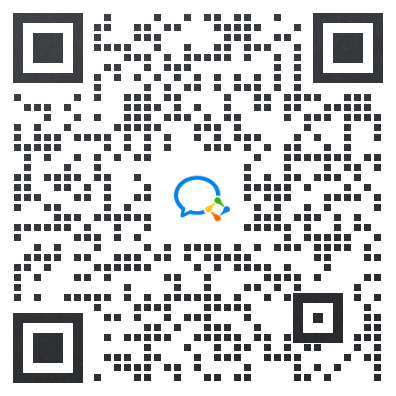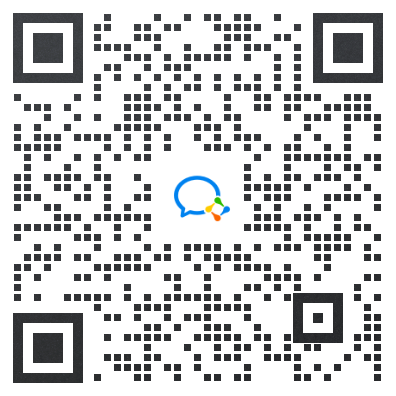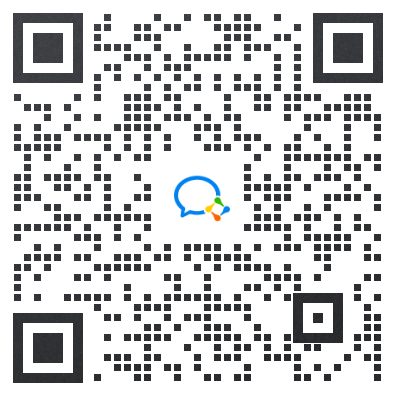新概念英语第四册原文附翻译:记录地震已发布,欢迎大家查看。新概念英语第四册内容主要针对的是基础比较薄弱的同学,为了方便同学们可以更好地巩固英语基础,小编还整理了新概念英语第四册课文、新概念英语第四册音频相关内容,便于同学们一起学习!
Recording an earthquake记录地震
First listen and then answer the following question.听录音,然后回答以下问题。
What does a pen have to do to record on paper the vibrations generated by an earthquake?
An earthquake comes like a thief in the night, without warning. It was necessary, therefore, to invent instruments that neither slumbered nor slept. Some devices were quite simple. One, for instance, consisted of rods of various lengths and thicknesses with would stand up end like ninepins. When a shock came, it shook the rigid table upon which these stood. If it were gentle, only the more unstable rods fell. If it were severe, they all fell. Thus the rods, by falling, and by the direction in which they fell, recorded for the severe, they all fell. Thus the rods, by falling, and by the direction in which they fell, recorded for the slumbering scientist the strength of a shock that was too weak to waken him, and the direction from which it came.
But instruments far more deliecate than that were needed if any really serious advance was to be made. The ideal to be aimed at was to devise an instrument that could record with a pen on paper, the movements of the ground or of the table as the quake passed by. While I write my pen moves, but the paper keeps still. With practice, no doubt, I could in time learn to write by holding the pen still while the paper moved. That sounds a silly suggestion, but that was precisely the idea adopted in some of the early instruments (seismometers) for recording earthquake waves. But when table, penholder and paper are all moving, how is it possible to write legibly? The key to a solution of that problem lay in an everyday observation. Why does a person standing in a bus or train tend to fall when a sudden start is made? It is because his feet move on , but his head stays still. A simple experiment will help us a little further. Tie a heavy weight at the end of a long piece of string. With the hand to and fro and around but not up and string so that the weight nearly touches the ground. Now move the hand to and fro and around but not up and down. It will be found that the weight a piece of string. With the hand held high in the air, hold the string so that the weight nearly touches the ground. Now move the hand to and fro and around but not up and down. It will be found that ten weight moves but slightly or not at all. Imagine an earthquake shock shaking the floor, the paper, you and your hand. In the midst of all this movement, the weight and the pen would be still. But as the paper moved from side to side under the pen point, its movement would be recorded in ink upon its surface. It was upon this principle that the first instruments were made, but while the drum was being shaken, the line that the pen was drawing wriggled from side to side. The apparatus thus described, however, records only the horizontal component of the wave movement, which is, in fact, much more complicated. If we could actually see the path described by a particle, such as a sand grain in the rock, it would be more like that of a bluebottle path described by a particle, such as a sand grain in the rock, it would be more like that of a bluebottle buzzing round the room; it would be up and down, to and fro and from side to side. Instruments have been devised and can be so placed that all three elements can be recorded in different graphs.
When the instrument is situated at more than 700 miles from the earthquake centre, the graphic record shows three waves arriving one after at short intervals. The first records the arrival of longitudinal vibrations. The second marks the arrival of transverse vibrations which travel more slowly and arrive several minutes after the first. These two have travelled through the earth. It was from the study of these that so much was learnt about the interior of the earth. The third, or main. The third, or main wave, is the slowest and has travelled round the earth through the surface rocks.
H.H,SWINNERTON The Earth beneath Us
New words and expressions 生词和短语
earthquake n. 地震slumber v. 睡眠ninepin n. 九柱戏中的木柱rigid adj. 坚硬的delicate adj. 灵感的seismometer n. 地震仪penholder n. 笔杆legibly adv. 字迹清楚地drum n. 鼓状物wriggle v. 扭动bluebottle n. 绿头苍蝇graph n. 图表graphic adj. 图示的longitudinal adj. 纵向的transverse adj. 横向的
参考译文
地震就像夜间的小偷,不打招呼就来了。因此,有必要发明一种仪器,既不打盹儿,也不睡觉。有些装置非常简单。例如,有一种装置是由一些长短、粗细不同的木棒组成,就像九柱戏的木棒一样坚立着,一旦有地震,就会震动竖立在坚硬的桌上的木棒。如果地震轻微,只有不稳定的木棒倒下;如果地震剧烈,所有的木棒都会例下。由于地震太弱而未惊醒科学家时,木棒倒下的多少和倒下的方向就为科学家记录下了地震的强度和地震方向。
但是,如果要取得真正重大的进展,需要有比这种装置精细得多的仪器。理想的目标是设计出这样一种仪器:当地震发生时,它能用笔在纸上记录下大地和桌子运动情况。我写字时,笔是移动的,纸是静止的。毫无疑问,经过练习,我最终能够学会笔不动而纸动来写字。这听起来似乎是一种愚蠢的想法,但是早期记录地震波的仪器(地震仪)正是采用了这中思路。可是,当桌子、夹笔装置、纸都在移动时,怎么能书写得清楚呢?可以从我们的日常生活观察中找到这个问题的答案。一个站在公共汽车或火车上,当车突然开动时,他为什么会倾倒呢?这是因为他的脚动了,而他的头保持着静止。再做一个简单的实验可以帮助我们进一步理解这个问题。把一个生物拴在一根长绳子的一端,把手高高举在空中握住绳子,让重物几乎接触地面。然后把手前后左右以及旋转摆动,但不要上下摆动。结果会发现,重物是动了,但动得很小,甚至没动。假定把一支笔拴在重物上,笔尖落在地板上的一张纸上,假定地震发生了,地板、纸、你和你的手都会动,重物和笔却不动。由于纸在笔下来回运动,纸的表面就会用墨水记录下地板运动的情况。根据这一原理,制造出了最初的地震仪器,但是纸是卷在慢慢放置的圆筒上的。只要一切都是静止的,笔就会划出一条直线;但是,圆筒受到震动,笔所画出的线就会就会左右摆动。然而,这里所说的仪器记录下来的只是地震波运动中的水平部份,地震波的运动实际比这要复杂得多。假如我们真能看到诸如岩石中一个沙粒子的运动轨迹,那就像一只嗡嗡叫的绿头苍蝇在屋内飞行的轨迹,呈现出上上下下、来来回回、左左右右3种性质的运动。已经设计出了一些仪器,它按照一定的安放方式就可测绘出这三种运动的曲线图。
如果把这种仪器安装在距震源700多英里远的地方,曲线记录就能显示出前后相同的这3种地震波。首先记录下的是纵向波的到达;然后记录下的是横向波的到达,横向波比纵向波传播得慢,在纵向波到过几分钟后能到达。这珍两种波都是穿过地球而来的。正是从这两种波中的研究中,我们可以了解到地球内部的许多情况。第三种波,即主波,是最慢的,是围绕地球通过表面岩石传来的。
以上就是为大家整理的“新概念英语第四册原文附翻译:记录地震”,,更多新概念英语的干货内容,欢迎访问新东方新概念英语课堂,查看新概念英语第四册答案、新概念英语第四册详解和新概念英语第四册听力可供参考。祝同学们学习新概念英语4顺利!
新东方在线英语水平测试
本文关键字: 新概念英语第四册

 资料下载
资料下载
新概念一册课文详解+语法+练习答案
发布时间:2022-12-22添加新东方新概念助教
免费获取资料

新概念一册单词默写表PDF版
发布时间:2022-01-13添加新东方新概念助教
免费获取资料

新概念MP3音频(美音+英音)
发布时间:2022-01-13添加新东方新概念助教
免费获取资料

英语三字经-日记2000词
发布时间:2022-01-13添加新东方新概念助教
免费获取资料

新概念1知识点+课文讲解
发布时间:2022-01-13添加新东方新概念助教
免费获取资料

新概念英语语法(全)
发布时间:2022-01-13添加新东方新概念助教
免费获取资料

《走遍美国》MP3教材
发布时间:2022-01-13添加新东方新概念助教
免费获取资料

老友记1-10季视频资料
发布时间:2022-01-13添加新东方新概念助教
免费获取资料

新概念英文原版电子书
发布时间:2022-01-13添加新东方新概念助教
免费获取资料

《新概念第一册》全套学习笔记
发布时间:2020-08-20添加新东方新概念助教
免费获取资料

《新概念英语语法大全》
发布时间:2020-08-20添加新东方新概念助教
免费获取资料

《生活大爆炸》全12季资源汇总
发布时间:2020-08-20添加新东方新概念助教
免费获取资料

《走遍美国》音频教材大全
发布时间:2020-08-20添加新东方新概念助教
免费获取资料

初中重点短语和句型大全
发布时间:2020-08-20添加新东方新概念助教
免费获取资料
零基础学习英语礼包
发布时间:2020-08-20添加新东方新概念助教
免费获取资料

初学英语语法指导礼包
发布时间:2020-08-20添加新东方新概念助教
免费获取资料

世界英文名著大全资源
发布时间:2020-08-20添加新东方新概念助教
免费获取资料

13部曲BBC听力精品资源
发布时间:2020-08-20添加新东方新概念助教
免费获取资料


关注四六级小助手服务号回复【典藏笔记】获取
关注新东方四级服务号,
获取学习资料

 推荐阅读
推荐阅读
本周,是英国民众能在爱丁堡动物园见到旅英中国大熊猫的最后一周。 据英国广播公司(BBC)30日报道,英国唯一一对大熊猫阳光和甜甜将
来源 : 网络 2023-12-02 19:31:15 关键字 : 新概念英语
重点讲解 1 transaction:交易;事务;办理;会报,学报 eg So far this year we have conclude more than ten trans
来源 : 网络 2023-12-05 06:22:00 关键字 : 新概念英语
今天我们要学的词是 reappear Reappear 有 重新出现" 的意思。 Russian President Vladimir Putin reappeared in pub
来源 : 网络 2023-12-04 08:21:00 关键字 : 新概念英语
重点讲解 1 payment:付款,支付;报酬,报答;偿还;惩罚,报应 eg Now what about the term of payment? 现在我们谈
来源 : 网络 2023-12-03 08:20:00 关键字 : 新概念英语
今天我们要学的词是 real estate Real estate 有 房地产" 的意思。 Real estate heir Robert Durst was arrested
来源 : 网络 2023-12-02 19:19:26 关键字 : 新概念英语
重点讲解 1 check:核对无误;将军(象棋);证明无误 eg Check the status of your email server 检查电子邮件服务器
来源 : 网络 2023-11-28 18:45:52 关键字 : 新概念英语
今天我们要学的词是 minimize Minimize 有 最小化" 的意思。 Saudi Arabia is trying to minimize the impact of
来源 : 网络 2023-11-28 18:44:33 关键字 : 新概念英语
初中英语语法,是初中英语中一个重要的板块。熟练的掌握这些语法知识,对于我们英语能力的整体提高,会有更好的帮助。那么具体的初中英
来源 : 网络 2023-11-27 22:24:20 关键字 : 初中英语语法
初中英语语法,是初中英语中一个重要的板块。熟练的掌握这些语法知识,对于我们英语能力的整体提高,会有更好的帮助。那么具体的初中英
来源 : 网络 2023-12-04 21:39:00 关键字 : 初中英语语法
初中英语语法,是初中英语中一个重要的板块。熟练的掌握这些语法知识,对于我们英语能力的整体提高,会有更好的帮助。那么具体的初中英
来源 : 网络 2023-12-04 21:39:00 关键字 : 初中英语语法


 资料下载
资料下载
添加新东方新概念助教
免费获取资料

添加新东方新概念助教
免费获取资料

添加新东方新概念助教
免费获取资料

添加新东方新概念助教
免费获取资料

添加新东方新概念助教
免费获取资料

添加新东方新概念助教
免费获取资料

添加新东方新概念助教
免费获取资料

添加新东方新概念助教
免费获取资料

添加新东方新概念助教
免费获取资料

添加新东方新概念助教
免费获取资料

添加新东方新概念助教
免费获取资料

添加新东方新概念助教
免费获取资料

添加新东方新概念助教
免费获取资料

添加新东方新概念助教
免费获取资料
添加新东方新概念助教
免费获取资料

添加新东方新概念助教
免费获取资料

添加新东方新概念助教
免费获取资料

添加新东方新概念助教
免费获取资料


 阅读排行榜
阅读排行榜
 相关内容
相关内容

